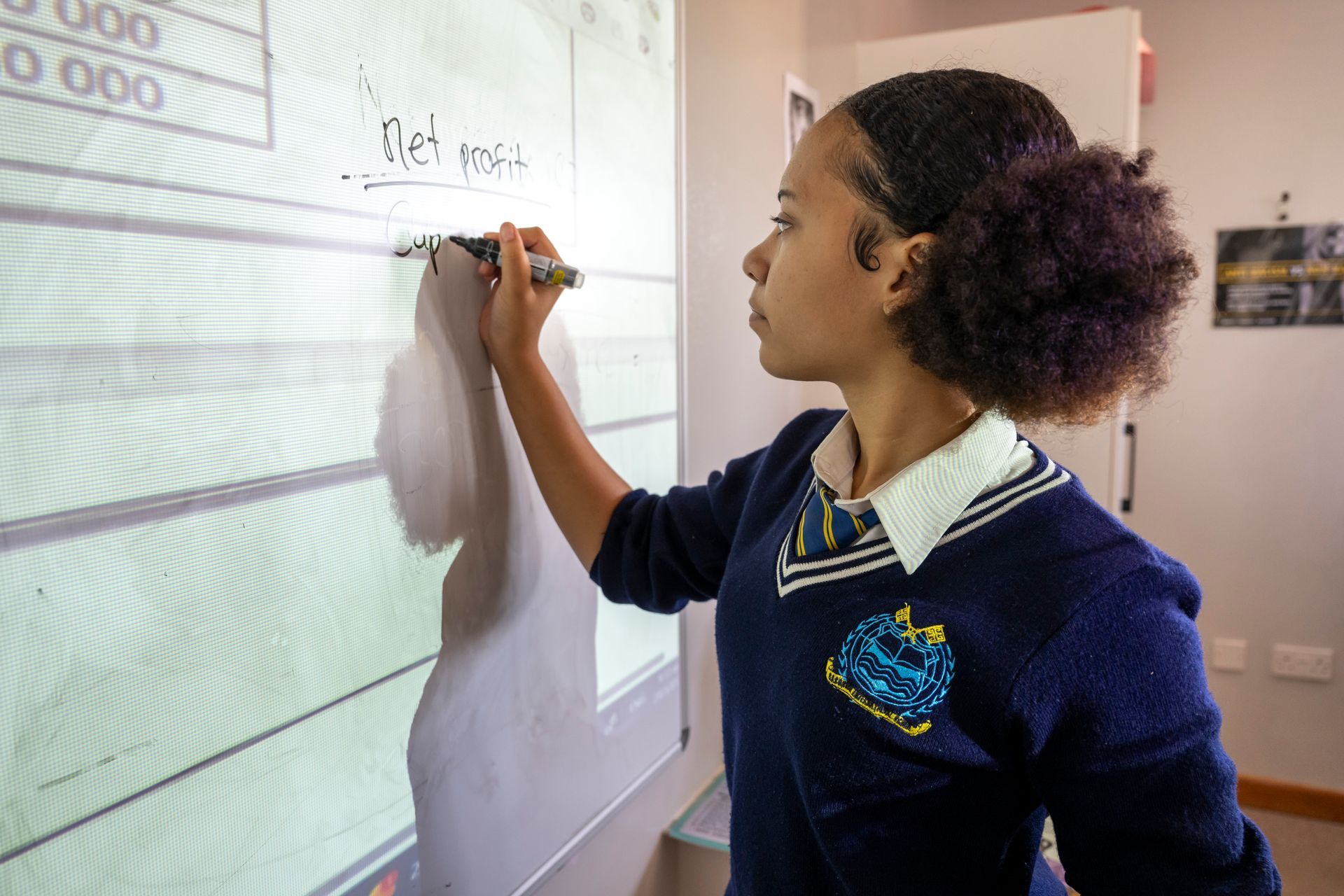Taming Childhood aggression: What can we do about it?
August 10, 2021
Meltdowns can cause misery for the child and everyone around this child. The good news is that adults can take charge and get support to manage aggressive behaviour in ways that are effective without being shaming.

Taming the anger monster in our children is a process, often like a marathon and definitely not a sprint to the line. Whether children hit or bite because they are angry or for reasons you just don't understand, aggressive behaviour can be a normal part of child development, especially between the ages of three and nine.
Sometimes toddlers are aggressive because they lack the verbal skills to get their needs across. A child who cannot say, "Don't do that," when their sibling takes a toy out of their hands may hit or bite to express their disapproval.
If children have a tendency towards this kind of aggressive behaviour, it’s up to you to help them develop judgement, self-discipline and the ability to express their feeling in appropriate ways. The good news is that as aggressiveness can be learnt so can calmness. We can follow and reinforce some very basic strategies to help educators and parents develop the ability within our children to stay and become calm from a very young age.
- Lead by example
. Children need someone to look up to and learn from. Parents primary role is to lead by example, modelling the kind of behaviour that you would like your child to adopt. A value system is important.
- Let your child continue being a child
. A toddler is all about testing boundaries. This is the way they explore and come into their own. However, when your children are throwing tantrums or exhibiting other destructive behaviour, it is easy to forget that you are dealing with a child and that they don’t have the wisdom to model good behaviour. Therefore, allow yourself a moment and your child to be a child. However, explain to them why their reactions are not appropriate and inform them of the alternative.
- Teaching your children to acknowledge early warning signs of aggressiveness
. Developing an awareness of early warning signs in a child is vital to success in this process of taming anger. Explain that we all have these little signs that tell us we are fast becoming angry, like maybe talking louder, getting flushed or clenching the fists. There are different signs for different people. Making your child aware will teach them to recognize and act accordingly.
- Teach your children to rethink their emotion
. Parents can start by helping children understand how their emotions work. Help children to label their feelings from an early stage in life and how to manage the big waves that flood them from time to time, both in anger and in joy.
- Age-appropriate techniques to tame anger
. Kids need to know appropriate ways to deal with their anger. Instead of being told, “Don’t hit your brother,” explain what they can do when they feel frustrated. Say, "Next time, use your words" or "Walk away from him when you feel angry."
- Praise nonaggressive behaviours
. Reduce your child's aggression by setting expectations for appropriate behaviour, providing clear and consistent consequences, and praising nonaggressive behaviours.
- Have consequences for misbehaviour
. As much as possible, parents are encouraged to stay consistent in discipline. If your child is aggressive toward another child, provide immediate consequences. Eventually the child will associate the negative consequence with the aggression. Parents can minimize aggressive behaviour with a few techniques that include:
* By staying calm,
* Minimizing situations that can flair up in misbehaviour,
* Avoiding negotiation (don't argue or explain too much),
* Helping your child problem solve solutions in conflict situations,
* Expressing and having open communication, telling them why it is not suitable to use bad language but rather positive language,
* Making your expectations for behaviour clear.
Parenting childhood aggression is protecting them from any physical trauma, and considering their mental and psychological well-being. If your child has frequent outbursts daily for several days or weeks, or is causing physical injury to himself or others, or is being sent home by friends or the school, contact your paediatrician immediately.
O ther than that, parenting childhood aggression is part of the developmental process and most children are able to learn how to manage their anger and frustration. It may require a little patience from you, but in the end, it will be all worth it!

In today’s connected world, young people grow up in a digital society where learning, friendships, and entertainment all happen online. At GIS, we see this not only as a reality to manage, but as an opportunity to empower our learners. Digital citizenship education is about much more than keeping students safe, it is about equipping them to use technology ethically, confidently, and effectively so they can thrive in the digital age. Why Digital Citizenship Matters Every post, click, or share leaves a digital footprint. These footprints can shape a learner’s reputation, relationships, and even their future opportunities. At GIS, students are taught to manage their online presence responsibly and make ethical choices. Through ICT lessons and the use of integrated platforms such as Microsoft Teams, Stasy, MAP, and ADvLEARN , learners don’t just study the theory of online safety, they practise it every day. Each GIS student logs in with personalised accounts, develops strong digital ethics, and is discouraged from behaviours that could lead to cybercrime.

Selecting a school for your child is one of the most important decisions you’ll make as a parent. A good school nurtures not just academic growth, but also social, emotional, and moral development. A good school does not only allow parents to dream of possibilities for their children but also assist in making those dreams become realities! With so many options available, public and private, it’s essential to know what to look for in making this important decision. During your next visit to a prospective school for your precious child, put some consideration towards the following important aspects of a school: 1. A Strong Educational Foundation Check for a clear and balanced curriculum that emphasizes core subjects like reading, math, science, and the arts. Ask about teaching methods and how the school measures progress. Look for schools that promote critical thinking, problem-solving, and creativity. Reputable schools produce excellent results, annually. At GIS we use Guided Readers, a digital platform for Standard 1-3 which gauges the reading ability of individual students. We also use ADvLEARN in Standard 7, Form 1-4 which uses adaptive technology to give tailor-made mathematics exercises to meet students where they are at, building them up to where they should be and beyond! Our campus is equipped with seven ICT labs, five physics/chemistry labs and two robotics labs. Our teachers are all equipped with laptos, projectors and sound bars to bring the class to life! We also have drones, VR-headsets, lazar cutters and 3-D printers – equipping our students to gain valuable experiences, preparing them for the real world! 2. Dedicated and Qualified Staff Meet the teachers and staff. Are they approachable, qualified, and passionate about education? A supportive, well-trained teaching staff can make a huge difference in your child’s learning experience. At GIS, all our teachers are qualified with 25% of our staff holding post-graduate degrees i.e. Masters and Honours Degrees. Another 46% hold degrees i.e. B.A, BEd or BSc. with the remainder of 29% holding a teaching diploma or equivalent. Our teachers enjoy regular training opportunities through our internal training platform, Sirius. Our teachers are thus life-long learners themselves, passionate about education and best-practice. We care about our individual students’ wellbeing and remain in close contact with parents throughout their child’s educational journey with us. 3. Registration, Health and Safety It is imperative to select a school which is registered with the necessary authorities as an operating school. All schools are bound by specific health and safety regulations with proven steps taken to comply. GIS High School is registered with Cambridge. The Primary School is registered with the Ministry of Education for PSLE examinations at the end of Standard 7. Being part of ADvTECH means that the school is subjected to rigorous health and safety protocol with internal and external audits being carried out annually. 4. A Positive School Culture Tour the school to observe the environment. Are students engaged and respectful? Do teachers and administrators seem enthusiastic and caring? A positive, inclusive atmosphere contributes significantly to a child’s confidence and motivation. We are proud to share that GIS-students hail from 32 different countries. We truly celebrate our unique cultures and individual strengths. Even so, we are grounded in Botswana values, taking care of our community and environment. Have a look out for our community service projects and participation in environmental programmes often shared on social media. 4. Student Support and Enrichment Opportunities Look for a school that provides more than just academics—such as counselling services, extracurricular activities, clubs, sports, and arts programs. These contribute to a well-rounded education and help children discover their interests and talents. At GIS, we have an on-site psychologist who assist with academic support and counselling. We also have a dedicated Deputy Principal of Pastoral Care and Discipline, ensuring that students are guided through each phase while reaching their full potential. Students can select from a vast range of extra-mural activities including but not limited to soccer, netball, swimming, athletics, basketball, table tennis, spelling bee competitions, maths Olympiads, debate and moot court. 5. Parental Involvement Strong schools often welcome parent engagement. Whether through regular communication or active partnerships between home and school, it truly supports student success. At the end of every academic term, parents are invited to our campus to meet with their children’s teachers to discuss the term’s progress and results. Parents are also invited to termly Coffee with the Heads of Schools during which important updates are shared. Parents are always welcome to reach out to our teachers and school management to support where needed. Final Thoughts Choosing the right school is a deeply personal decision. Take your time to visit, ask questions, and trust your instincts. Remember: the best school is the one where your child feels safe, supported, and inspired to learn! Allow us to dream with you and assist your child to ascend to their aspirations! You are invited to visit our school and to meet our principals.

At GIS Pre-Primary we follow the Reggio Emilia approach, and we believe that learning flourishes through collaboration among educators, learners, and families. Our environment is designed to spark curiosity, creativity, and meaningful connections. Central to our philosophy is the idea that parents are not just supporters of education but active partners in the learning journey. 1 . Open Communication We prioritize clear and consistent communication. Each term begins with a newsletter outlining key calendar events, followed by timely WhatsApp reminders to keep families informed. Monthly class overviews help parents stay engaged with their child’s learning, identify areas needing support, and collaborate with teachers before new topics are introduced. 2. Meaningful Parent Engagement We actively invite parents into the classroom to observe and participate in hands-on learning experiences. Celebrations like Father’s Day and Mother’s Day are honored, while events such as Sports Day offer opportunities for parents to join in the fun. When children see their parents involved, it reinforces a sense of encouragement and shared purpose, sending a powerful message that their education is deeply valued. 3 . Supporting Home Learning Learning does not stop at the school gate. Through weekend projects and real-world experiences, like gardening, baking, or museum visits, parents help children explore their world. Learners document these moments through photos and videos, fostering reflection, independence, and self-motivation. Watching themselves and their peers engaged in discovery empowers children to take ownership of their growth. 4. Celebrating an Inclusive Community At GIS, we proudly celebrate the diversity of our school community by hosting a range of events at varied times, ensuring that everyone can participate and feel included. Our Family Fun Day is a vibrant example of this, bringing together families from all walks of life to share in the rich cultural heritage, diverse experiences, and unique perspectives that make our school so special. These events not only foster a sense of belonging and connection among families but also create a warm and inclusive environment that welcomes and values every individual. Strong parent–teacher partnerships are the foundation of a thriving learning environment. At GIS, we’re committed to nurturing these connections, ensuring that every child is supported, inspired, and surrounded by a community that believes in their potential.
